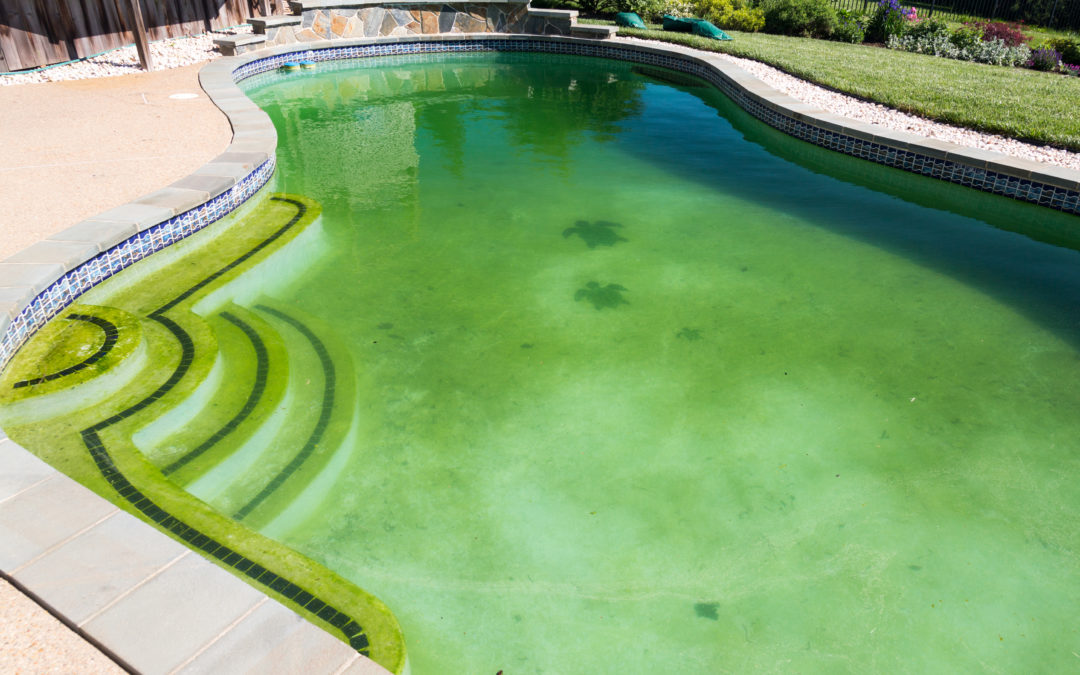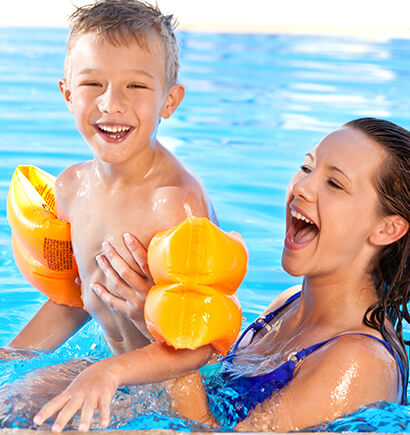Improper Filtration:
The filter system is responsible for removing algae and other debris from the pool. There are four types that are generally used in swimming pools – sand filters, glass filters, cartridge filters and DE filters.
In a sand filtration system, the water is pumped through the sand, separating the algae and other elements from the pool water. Glass filters work similarly, but with an extra benefit that it is able to attract and separate more minute particles.
In a cartridge filter, corrugated paper or polyester cloth is used to separate the pollutants. Whereas, DE filters are capable of separating particles of up to 3 microns from the water. In these filters the water passes through diatomaceous earth.
If the filter is clogged somehow or is not working properly, then algae will flourish, turning the water green.
Incorrect pH Balance:
On a pH scale, a healthy pool is categorized as having a value between 7.2 and 7.8.
Lower pH levels indicate that chlorine will be less effective in the pool. This will promote the growth of algae and bacteria, causing the water to change colour.
A high pH level will turn the pool acidic, corroding metals and plastic that come in contact with the water.
Phosphate Presence:
If you do not clean your pool properly, then organic debris will start accumulating. This results in the phosphate levels increasing, attracting algae which feed on the phosphates.
You should also be careful when spraying fertilizers on the grass surrounding the pool. Fertilizers contain phosphorus, which can leak into the water. During the intense heat of summer, algal growth can speed up in the presence of phosphates.
Returning the Water Back to Normal
Firstly, check that the filter is working correctly. Then make sure that it is running for an adequate amount of time, for example – 4 hours per day in winter and 8 hours in summer. If the filter is not performing as expected, call for professional help.
Secondly, if the discoloration is caused due to water imbalance, then you need to take the pool water for testing. About 1 cup of water is enough for the test, but make sure it is less than an hour old when you submit it.
Remember to not collect water from the top surface layer of the pool. Instead, take it from about an elbow’s length down. The shop will check the water balance and give you advice on which chemicals are needed to get rid of the algae.
In all likelihood, you will have to treat the pool with large quantities of algaecide and chlorine. Within 24 hours of mixing these substances in the water, all microbes should be effectively killed off. You can also use a phosphate remover to clean out any phosphorous present in the water.
But if the swimming pool remains green even after the chemical treatment, you need to call in a professional pool expert to help resolve the issue.
Do you need help with a Green Pool right now?
Having a green pool is a nasty problem that no one wants to have, so the best thing is to call in someone who knows what they are doing. Call Poolside Northshore on 0800 800 744 and we can make your green pool clean and clear as soon as possible.


